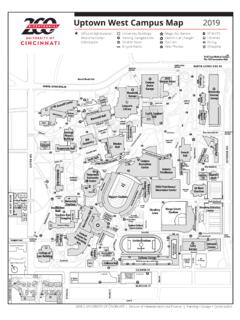Transcription of C. M. Tucker Jr., Nursing Care Center Stone Pavilion ...
1 south carolina Department of Mental Health State Director John H. Magill C. M. Tucker Jr., Nursing Care Center Stone Pavilion Nursing home administrator Frances Corley Fall 2011 south carolina has a long history of caring for those s u f f e ri n g fr o m m e nt a l illness. In 1694, the Lords P r o p r i e t o r s o f S o u t h carolina established that the destitute mentally ill should be cared for by local governments. The concept of Outdoor Relief, based upon Elizabethan Poor Laws, af-firmed that the poor, sick and/or disabled should be taken in or boarded at public expense.
2 In 1762, the Fellow-ship Society of Charleston established an infirmary for the mentally ill. But it was not until the 1800 s that the mental health movement re-ceived legislative attention at the state level. Championing the mentally ill, south carolina Legislators Colonel Samuel Farrow and Major William Crafts worked zealously to sensitize their fellow lawmakers to the needs of the mentally ill, and on December 20, 1821, the south carolina State Legisla-ture passed a statute-at-large approving $30,000 to build the south carolina Lunatic Asylum and a school for the deaf and dumb.
3 This legisla-tion made south carolina the second state in the nation (after Virginia) to provide funds for the care and treat-ment of people with mental illnesses. T h e M i l l s B u i l d i n g , designed by renowned architect Robert Mills, was completed and operational in 1828 as the south carolina Lunatic Asylum. The facilities grew through the decades to meet demand, until inpatient occupancy peaked in the 1960 s at well over 6,000 patients on any given day.
4 From 1828 through 2011, south carolina state-run hos-pitals and Nursing homes treated over 947,000 patients a n d p r o v i d e d o v e r 148,500,000 bed days. In the 1920 s, treatment of the mentally ill began to in-clude outpatient care as well as institutional care. The first outpatient Center in south carolina was established in Columbia in 1923. The 1950 s saw the discovery of phenothiazines, "miracle drugs" that controlled many severe symptoms of mental illness, making it possible to "unlock" wards.
5 These drugs enabled many patients to function in society and work towards recovery, reducing the need for prolonged hospi-talization. Government sup-p o r t a n d s p e n d i n g increased in the 1960 s. The south carolina Community Mental Health Services Act (1961) and the Federal Com-munity Health Centers Act (1963) provided more funds for local mental health care. The south carolina Depart-ment of Mental Health (DMH) was founded in 1964.
6 In 1967, the first mental healthcare complex in the south , the Columbia Area Mental Health Center , was built. The centers and clinics have served over 2,800,000 patients, providing over 38,000,000 clinical contacts. Today, DMH operates a net-work of 17 community men-tal health centers, 42 clinics, three veterans Nursing homes, and one community Nursing home . DMH is one of the largest hospital and com-munity-based systems of care in south carolina .
7 In FY11, DMH outpatient clinics pro-vided 1,175,482 clinical con-tacts and DMH hospitals and Nursing homes provided nearly 530,000 bed days. Last year, DMH treated nearly 100,000 citizens, including a p p r o x i m a t e l y 3 0 , 0 0 0 children and adolescents. DMH HISTORY AND DEMOGRAPHICS PAGE 2 DMH MISSION: TO SUPPORT THE RECOVERY OF PEOPLE WITH MENTAL ILLNESSES. DMH OPERATES A NETWORK OF SEVENTEEN COMMUNITY MENTAL HEALTH CENTERS, 42 CLINICS, FOUR HOSPITALS, THREE VETERANS Nursing HOMES, AND ONE COMMUNITY Nursing home .
8 Babcock Building Cupola DMH HOSPITALS AND Nursing HOMES Columbia, SC G. Werber Bryan Psychiatric Hospital William S. Hall Psychiatric Institute (Child & Adolescents) Morris Village Alcohol & Drug Addiction Treatment Center Tucker , Jr. Nursing Care Center - Stone Pavilion (Veterans Nursing home ) Tucker , Jr. Nursing Care Center - Roddey Pavilion Anderson, SC Patrick B. Harris Psychiatric Hospital Richard M. Campbell Veterans Nursing home Walterboro, SC Veterans Victory House (Veterans Nursing home ) PAGE 3 DMH C.
9 M. Tucker Nursing CARE Center - Stone Pavilion C. M. Tucker , Jr. Nursing Care Center Stone Pavilion 2200 Harden Street Columbia, SC 29203 (803) 737-5301 Club, which provided food to needy families at Christmas-time, and was active in both the Lions Club and the Boy Scouts of America. He also served as the State Chairman of the SC Agency for Vocational Rehabilitation. There are almost 409,000 vet-erans residing in south Caro-lina, representing approxi-mately 9% of the state s popu-lation.
10 DMH is the second larg-est provider of Nursing home bed days in south carolina , and currently has 516 beds dedi-cated to veterans, representing a third of its total inpatient beds. It is noteworthy that, though Stone is part of DMH, admission is based on a per-son s status as a veteran and is not associated with having any mental health problems. Stone offers veterans a com-plete living environment by providing on-site medical care, Nursing care, rehabilitative therapy, pharmacy services, recreational and therapeutic activities, social services, pas-toral care, dietary services, transportation services, beauty and barber services, and laun-dry services.
















